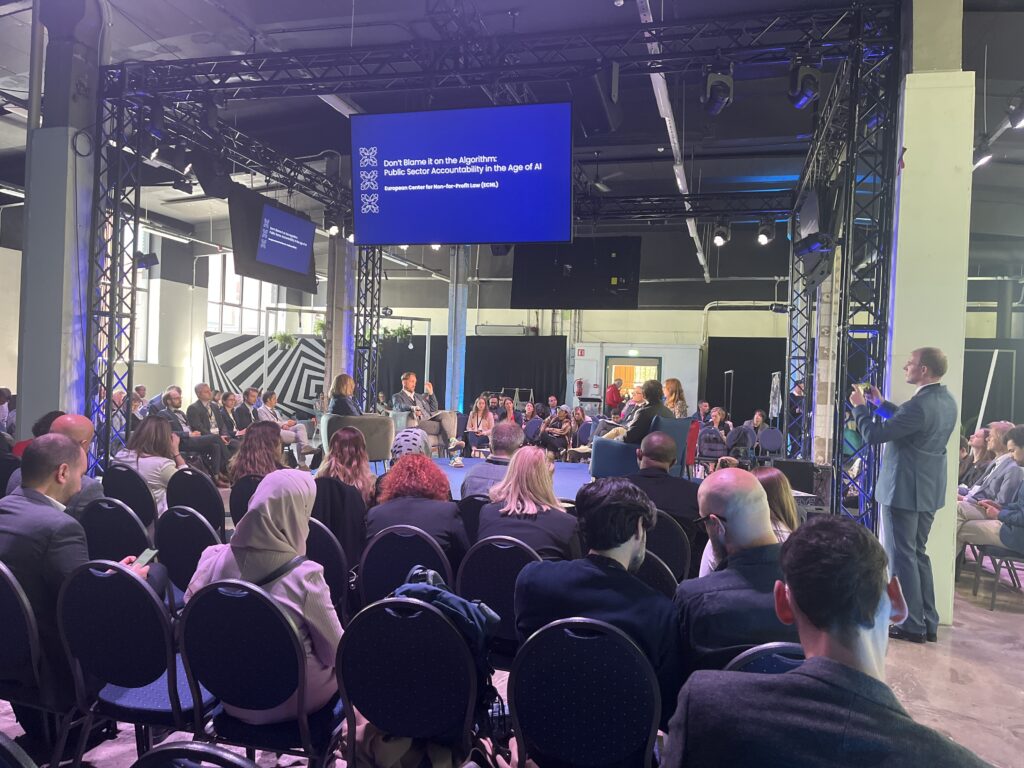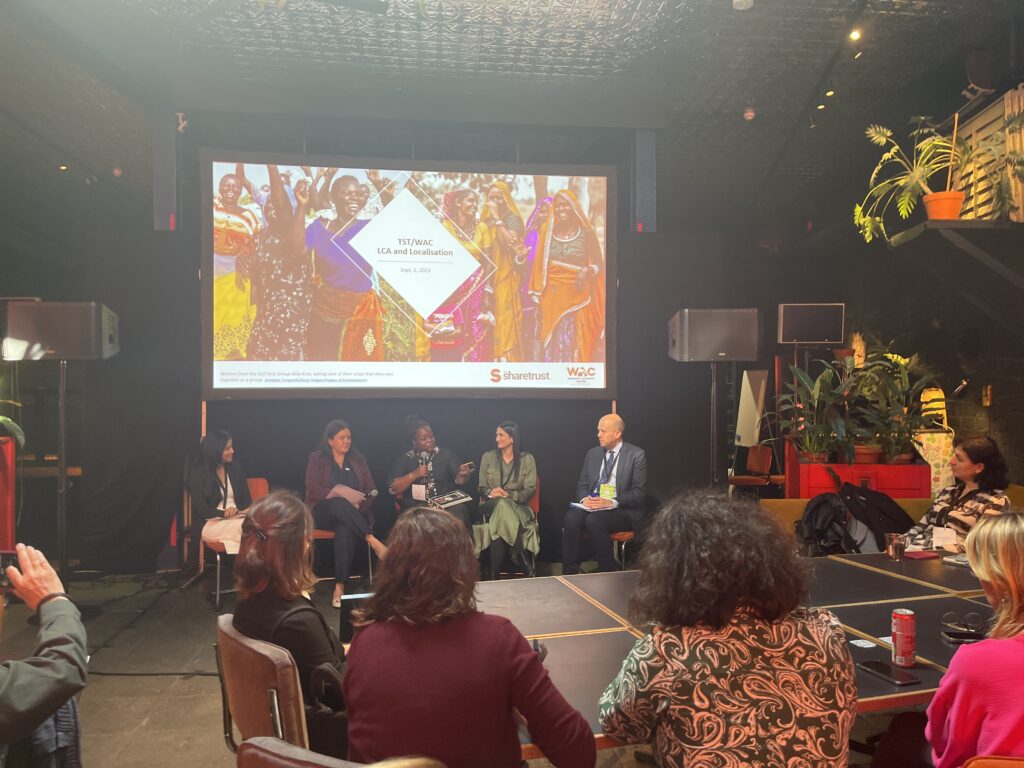It’s been almost a year since I attended the 8th Open Government Partnership Global Summit (OGP) held in September 2023 in Tallinn, Estonia. However, the insights I gained from that experience still resonate with my research. During the one-week event, one particular activity stood out in my mind. I received an unconventional invitation from the “Institute of Meetings and Non-meetings,” a creative platform led by two local Estonian artists. On a Wednesday at midnight, I, along with two Ukrainian mayors, the Paris OGP representative, and our guide, a local artist, found ourselves on a nocturnal journey through the streets of Tallinn. Our expedition led us to the Sakala Theater House, an early 20th-century cultural and social hub that once served as a venue for Soviet propaganda and cultural events.
Once inside the theater, which now hosts local and international performances, we were guided to the second floor, where we found ourselves lying in complete darkness. Looking up at the ceiling of a splendid hall, which combined Art Nouveau motifs with classical elements, we saw a circular mural by the Estonian artist Johann Köler that occupied most of the ceiling. According to our guide, during the renovations of the Sakala Theater House in the late 20th and early 21st centuries, Köler was commissioned to paint a mural that would represent life in Estonia to theater visitors.
Köler painted the mural during the Estonian National Awakening period. He initially considered depicting revolutionary scenes reflecting a political awakening of the emerging nation. However, he ultimately chose to paint a simpler scene that would resonate with most Estonians. The mural depicts the treetops in an Estonian forest as viewed from below, connecting to the everyday lives of Estonian people who explored the nearby forests of Tallinn as a common leisure activity. Köler chose the simplicity of everyday life over depicting a glorious nascent nation. From my perspective, Köler’s decision about the mural can metaphorically represent the current landscape in the open government movement, which includes open data as one of the enabling factors.
The OGP Global Summit brought together partnership members from 72 countries, including government officials, civil society organizations, and founding organizations focused on development. Throughout the event, I noticed two main discourses related to open governance. The first centered on technology-driven perspectives, touching on topics such as digitalized government, for example, the Ukrainian initiative “Diia” – a mobile app aiming to provide citizens access to all public services or the use of AI systems for public sector accountability. Additionally, this perspective emphasized public values such as democracy, freedom of expression, transparency, and trust. Interestingly, there was no representation of technology organizations and companies behind such technologies. The second perspective focused on community-driven efforts. The discussions revolved around building capabilities, financial sustainability, participation, and changing power dynamics. Civil society organizations, citizens, and local government practitioners took center stage in these conversations. I distinctly remember a local public officer expressing appreciation for finally being recognized as an important voice in the summit’s discussions.


Throughout my involvement in the ODECO project, I could see the polarized views again during our visit to the European Commission during the last training week in Belgium. We were presented with the new concept of European Data Spaces. Across the presentations, there was a huge focus on technology as an enabler, and I wondered whether practitioners were being considered. My reflections are echoed in the work of scholars such as Ruijer or Van Maanen, who take on a more “practice-theoretical perspective,” which involves examining the use of technologies, methodologies, organizations, regulations, and other relevant factors within specific scenarios. For them, data usage’s actual value and impact only become evident through a close-up study of such scenarios. This perspective also reminds me of a comment from a public practitioner from an open government geodata initiative after presenting my work. She mentioned that while the concepts were nice and fancy, working with data was not as complex for her. This leads me to question whether we are taking a grand and glorious perspective on open data or should we look at it as the treetops in the Estonian forest?


